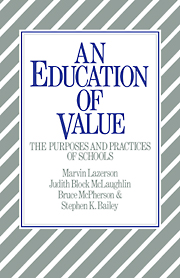Chapter 2 - New curriculum, old issues
Published online by Cambridge University Press: 05 June 2012
Summary
Americans are both historically oriented and ahistorical. l i Nowhere is this more apparent than in debates over school curriculum. We lament low academic standards in the schools, call for a return to a lost rigor, and insist on going back to basics. Yet, even as we hold up the past as a standard, we lack understanding of what actually happened in the past. State departments of education rewrite curriculum guides in attempts to strengthen the commitment to learning. School districts trim their curricular offerings and stiffen graduation requirements. In the U.S. Congress and state legislatures, laws are passed to improve science, mathematics, technology, and foreign language instruction. And teachers are being warned to take the academic content of their work more seriously.
As serious as the criticisms are, there is nevertheless a déja vu quality to these concerns. They are reminiscent of criticisms raised some twenty-five to thirty years ago. The 1950s and 1960s were the most intense period of curricular reform in American educational history, when the curricula of virtually every academic discipline were under examination. “New mathematics” was substituted for the “old” arithmetic; new physics, chemistry, and biology captured science education; “new social studies” and transformational grammar competed with the familiar history, civics, and grammar courses. The curriculum reformers were determined to change the course offerings of an educational system they believed to be uninspiring, unintellectual, and insufficiently challenging for its most gifted students.
- Type
- Chapter
- Information
- An Education of ValueThe Purposes and Practices of Schools, pp. 23 - 46Publisher: Cambridge University PressPrint publication year: 1985
- 2
- Cited by

